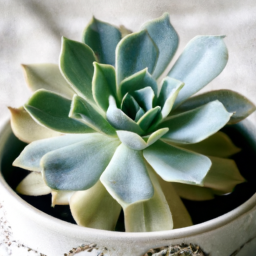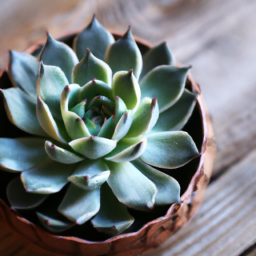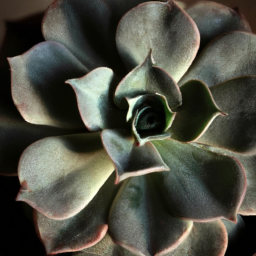
Are you looking to add some greenery to your home without the hassle of high maintenance plants? Look no further than types of succulent house plants! These trendy and low-maintenance plants are perfect for anyone looking to bring a touch of nature indoors. Succulents come in a wide variety of shapes, sizes, and colors, making them a versatile and stylish choice for any home decor. In this blog post, we will explore some of the most popular types of succulent house plants and provide tips on how to care for them to ensure they thrive in your home. So, grab your gardening gloves and let’s dive into the wonderful world of succulents!
Common Types of Succulent House Plants
Introduction
Succulent house plants have gained popularity in recent years due to their low-maintenance nature and unique appearance. These plants store water in their leaves, stems, or roots, allowing them to thrive in dry conditions. There are many different types of succulent house plants to choose from, each with its own characteristics and care requirements. In this article, we will explore some of the most common types of succulent house plants and provide tips on how to care for them.
Aloe Vera
Aloe vera is one of the most well-known and widely used succulent house plants. This plant has thick, fleshy leaves that contain a gel-like substance known for its healing properties. Aloe vera is easy to care for and requires minimal watering. It prefers bright, indirect light and well-draining soil. To care for your aloe vera plant, water it sparingly, allowing the soil to dry out between waterings. You can also propagate aloe vera by removing offsets from the base of the plant and replanting them in their own pots.
Another popular succulent house plant is the Echeveria. This plant has rosette-shaped leaves in a variety of colors, including green, purple, and blue. Echeveria plants are drought-tolerant and prefer bright, indirect light. They should be watered sparingly, allowing the soil to dry out completely between waterings. Echeveria plants can be propagated by removing offsets or leaf cuttings and replanting them in well-draining soil.
The Snake Plant, also known as Sansevieria, is a hardy succulent house plant that is perfect for beginners. This plant has tall, upright leaves that come in a variety of patterns and colors. Snake plants are low-maintenance and can tolerate low light conditions. They should be watered sparingly, allowing the soil to dry out between waterings. Snake plants can also help purify the air in your home by removing toxins.
Jade Plant
The Jade Plant is another popular succulent house plant that is known for its thick, oval-shaped leaves and tree-like appearance. This plant is easy to care for and can live for many years with proper care. Jade plants prefer bright, indirect light and well-draining soil. They should be watered sparingly, allowing the soil to dry out between waterings. Jade plants can be propagated by taking leaf or stem cuttings and allowing them to dry out before planting them in soil.
In conclusion, there are many different types of succulent house plants to choose from, each with its own unique characteristics and care requirements. Whether you are a beginner or an experienced gardener, there is a succulent house plant that is perfect for you. By following the tips provided in this article, you can enjoy the beauty of succulent house plants in your home for years to come.

Best Succulent House Plants for Beginners
Introduction
Welcome to the wonderful world of succulent house plants! Succulents are a popular choice for indoor plants due to their low maintenance requirements and unique appearance. In this guide, we will explore some of the best succulent house plants for beginners, perfect for those just starting out on their succulent journey.
Echeveria
Overview
Echeveria is a genus of succulent plants native to semi-desert areas of Central America. They are known for their rosette-shaped leaves that come in a variety of colors, from pale green to purple. Echeverias are easy to care for and can thrive in a variety of indoor conditions.
Care Tips
To care for your Echeveria, make sure to plant them in well-draining soil and place them in a bright, sunny spot. Water sparingly, allowing the soil to dry out between waterings. Echeverias are sensitive to overwatering, so be sure not to let them sit in water for extended periods.
Propagation
Echeverias can be propagated easily from leaf cuttings or offsets. Simply remove a healthy leaf or offset from the plant and allow it to dry out for a few days before planting it in soil. Within a few weeks, you should start to see roots forming and a new plant emerging.
Sansevieria
Overview
Sansevieria, also known as Snake Plant or Mother-in-law’s Tongue, is a popular succulent house plant known for its long, sword-shaped leaves. They are extremely low maintenance and can thrive in low light conditions, making them perfect for beginners.
Care Tips
Sansevierias prefer well-draining soil and only need to be watered sparingly. They can tolerate neglect and are resistant to pests and diseases. Place your Snake Plant in indirect sunlight for best results, but they can also survive in low light conditions.
Propagation
Sansevierias can be propagated through division or leaf cuttings. To propagate through division, simply separate the plant into smaller sections and replant them in fresh soil. For leaf cuttings, cut a healthy leaf into smaller pieces and plant them in soil, making sure to keep the soil moist until roots develop.
Aloe Vera
Overview
Aloe Vera is a well-known succulent plant with medicinal properties. It has fleshy, serrated leaves that contain a gel with various health benefits. Aloe Vera is easy to care for and can thrive in a variety of indoor conditions.
Care Tips
Plant your Aloe Vera in well-draining soil and place it in a sunny spot where it can receive direct sunlight. Water sparingly, allowing the soil to dry out between waterings. Aloe Vera is drought tolerant and can survive periods of neglect.
Propagation
Aloe Vera can be propagated through offsets or leaf cuttings. Simply remove a healthy offset or leaf from the plant and allow it to dry out for a few days before planting it in soil. Keep the soil moist until roots develop, and your new plant should start to grow in no time.

Rare and Unique Succulent House Plants
Introduction
Succulent house plants have gained popularity in recent years due to their unique and low-maintenance nature. While there are many common types of succulents available, there are also rare and unique varieties that can add a special touch to your indoor garden. In this guide, we will explore some of the most rare and unique succulent house plants that you can add to your collection.
Variegated String of Pearls
One of the most unique succulent house plants is the Variegated String of Pearls. This plant features delicate, trailing stems with small, round leaves that resemble tiny pearls. What sets this variety apart is its variegated foliage, which includes shades of green, white, and sometimes pink. The Variegated String of Pearls is a stunning addition to any indoor garden and can be displayed in a hanging basket or on a high shelf to showcase its trailing nature.
In terms of care, the Variegated String of Pearls prefers bright, indirect light and well-draining soil. It is important to allow the soil to dry out between waterings to prevent root rot. This plant is sensitive to overwatering, so it is best to err on the side of underwatering rather than overwatering. With proper care, the Variegated String of Pearls can thrive and continue to delight with its unique appearance.
Another unique succulent house plant is the Variegated String of Hearts. This plant features heart-shaped leaves with striking variegation, including shades of green, white, and pink. The Variegated String of Hearts is a trailing plant that can be displayed in a hanging basket or on a shelf to showcase its cascading foliage. This plant is relatively easy to care for and prefers bright, indirect light and well-draining soil. It is important to allow the soil to dry out between waterings to prevent root rot.
Black Rose Aeonium
The Black Rose Aeonium is another rare and unique succulent house plant that is sure to make a statement in your indoor garden. This plant features rosettes of dark purple, almost black, leaves that are edged with a hint of green. The Black Rose Aeonium is a striking plant that can be grown both indoors and outdoors, depending on your climate. In colder climates, it is best to grow this plant indoors to protect it from frost.
In terms of care, the Black Rose Aeonium prefers bright, indirect light and well-draining soil. It is important to water this plant sparingly, allowing the soil to dry out between waterings. Overwatering can cause the roots to rot, so it is best to water this plant only when the soil is dry. With proper care, the Black Rose Aeonium can thrive and continue to impress with its unique coloration.
In conclusion, rare and unique succulent house plants can add a special touch to your indoor garden. By choosing varieties such as the Variegated String of Pearls, Variegated String of Hearts, and Black Rose Aeonium, you can create a stunning and diverse collection of succulents that will delight and impress. Remember to provide these plants with the proper care, including bright, indirect light and well-draining soil, to ensure that they thrive and continue to showcase their unique beauty.
In a Nutshell
Succulent house plants are a popular choice for indoor gardening enthusiasts due to their unique shapes, colors, and low-maintenance nature. There are several types of succulents that you can choose from to add a touch of greenery to your home. One of the most common types is the Echeveria, known for its rosette-shaped leaves and vibrant hues ranging from green to purple. Another popular choice is the Aloe Vera plant, which not only adds a pop of green to your space but also has medicinal properties for treating burns and skin irritations.
If you’re looking for a succulent that thrives in low light conditions, the Haworthia is a great option with its thick, dark green leaves that form a rosette shape. For those who prefer a more unique-looking succulent, the String of Pearls plant is a great choice with its trailing stems adorned with small, bead-like leaves. No matter your preference, there is a succulent house plant out there that will suit your style and brighten up your living space. So go ahead and add some greenery to your home with these beautiful and easy-to-care-for succulents!
Your Questions Answered. Comprehensive FAQ:
Q1: What are some popular types of succulent house plants?
A1: Some popular types of succulent house plants include Echeveria, Aloe Vera, Jade Plant, String of Pearls, and Snake Plant.
Q2: What are the care requirements for succulent house plants?
A2: Succulent house plants require plenty of sunlight, well-draining soil, and infrequent watering. They thrive in dry conditions and do not require frequent watering like other house plants.
Q3: Can succulent house plants be grown indoors?
A3: Yes, succulent house plants can be grown indoors as long as they receive enough sunlight. They are well-suited to indoor environments and can thrive in pots or containers.
Q4: How often should I water my succulent house plants?
A4: Succulent house plants should be watered sparingly, about once every 2-3 weeks depending on the humidity levels in your home. It’s important to allow the soil to dry out completely between waterings to prevent root rot.
Q5: Are succulent house plants easy to care for?
A5: Yes, succulent house plants are generally easy to care for as they require minimal maintenance. As long as they receive enough sunlight and are not overwatered, they can thrive indoors with little effort.
Dr. Olivia Green is a botanist with over two decades of experience in indoor plant cultivation. She holds a Ph.D. in Plant Biology and has dedicated her career to researching plant behavior in controlled environments. Dr. Green is passionate about helping plant enthusiasts master the art of indoor gardening through her extensive knowledge and practical insights.


